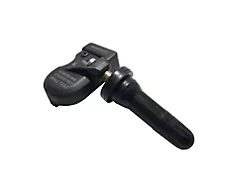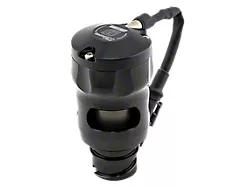
How to Install Flowmaster 2.5 in. Scavenger Series Elite Shorty Headers (07-09 4.8L, 5.3L Silverado 1500) on your Chevy Silverado
Shop Parts in this Guide
The product accompanying this document has been granted a California Air Resources Board (CARB) exemption, an “E.O.” number, or is a direct or consolidated replacement part. It is 50-state legal, per the manufacturer’s application Guide.
Note: Installation of this product requires an adequate work space, general mechanic’s tools, general mechanical “know how” and a reasonable level of experience. Most auto enthusiasts with these resources will have little difficulty installing these headers. However, you should carefully read these instructions before attempting to install these headers. If in doubt, consult a professional mechanic. (Better to do it now than to get stuck halfway through the installation.) This part is certified for use on Pollution Controlled Vehicles.
Check to make sure that you have received the proper parts for your installation. The header number will be stamped on the engine flange. If you are unsure you have received the proper parts call before you start work.
Be sure to work safe! Whenever you work under the vehicle be sure that it is located on level, solid ground and is supported by adequate safety stands. Remember: hot asphalt will not support most jack stands!
Many factors affect the installation of headers, some of which are; broken or aftermarket motor mounts, accidents that impact the configuration of the frame, and/or the installation of different engines or aftermarket cylinder heads.
Attention Customers breaking in new engines: Due to the extreme heat generated during the break-in process, the appearance of the ceramic coating may be altered in certain areas. The protection characteristics and thermal barrier properties of the coating is never compromised. It is recommended that a cast iron manifold or old set of headers be used for this process.
The purchaser is responsible for following all installation instructions and safety guidelines supplied with your new Flowmaster Performance Exhaust Product. Flowmaster Performance exhaust assumes no responsibility for damages resulting from improper operation, misuse, abuse, or lack of reasonable care, or any problems resulting from incompatibility with other manufacturer’s products.
Flowmaster uses sealing beads on its headers. We have found that when installed correctly, the raised bead around each port increases the pressure exerted on the gasket directly adjacent to the port and effectively prevents leaking gaskets. It is normal for the flange to be raised off the cylinder head the thickness of the sealing bead. It is important when installing the header, to install all bolts loosely, and then tighten evenly to ensure the flat installation of the flange. The torque sequence from one flange to another will vary, but generally every bolt on a header should be first fit snug, starting from the inside of the flange working out, alternating from top to bottom so that the bolt connects the flange to the manifold to the point where they barely touch. Second, using the same inside-out pattern, tighten each bolt until finished. This method will help prevent leakage and will give the user the best possible performance out of their new set of headers.
1) Place the vehicle in a location where the floor is solid and flat, with adequate lighting. Do not attempt to work on a hot engine. Heat causes metal to expand and makes removal of fasteners difficult at best. Disconnect the battery cables from the battery. Raise the front of the vehicle to obtain adequate access to the bottom exhaust manifold flanges. Use large base jack stands to support the vehicle. Do not rely on the jack! Block the tires to prevent the vehicle from rolling off of the jack stands.
2) Disconnect the spark plug wires by grasping and gently twisting the spark plug wire boots. Do not pull on the wires! Spray WD-40 or some type of penetrating lubricant on all accessible exhaust manifold fasteners and fittings before attempting to remove them.
DRIVER’S SIDE:
3) On air pump equipped vehicles remove the air tube from the manifold and slip it loose from the rubber hose at the rear of the engine.
4) Remove the two thru bolts from the steering shaft, and slip the steering shaft apart. Now unbolt the manifolds from the factory exhaust system.
5) Remove the six bolts holding the exhaust manifold to the head, and then remove the manifold.
6) With the manifold out of the way, clean any carbon deposits left on the head using a small wire brush or similar instrument. Prepare the supplied header bolts by applying a small amount of antiseize to the threads. Note: Using anti-seize is especially important on aluminum cylinder heads.
7) Install the new header using the supplied gaskets, fasteners and lock washers.
8) Reconnect the steering shaft. Also, re-install the spark plug wires and the air tube (if so equipped).
PASSENGER SIDE:
9) Remove the air tube (if equipped), also remove the spark plug wires and set aside. Disconnect the EGR tube from the manifold if equipped, remove the bolt attaching the dipstick tube bracket to the head and then remove the dipstick tube.
10) Remove the 6 bolts attaching the exhaust manifold to the head. Remove the manifold.
11) Scrape any carbon build up from the head and prepare the header bolts with anti-seize as above.
12) Install the new Flowmaster header using the fasteners and gasket supplied in the kit.
13) Reconnect the EGR tube if equipped using the gasket and hardware supplied.
14) Re-install the dipstick tube, spark plug wires and air tube if equipped.
15) Using the supplied fasteners, reconnect the factory exhaust to the header using the supplied gasket on the driver’s side. We recommend that you apply a small amount of Hi-Temp silicone on the passenger collector dome.
16) Start the engine and let it warm up. Check for leaks. Shut the engine off and allow it to cool. Check to see that all fasteners are tight.
17) Re-torque the header bolts after the first 100 miles. After that periodically check and retighten the header bolts.
Parts List
















